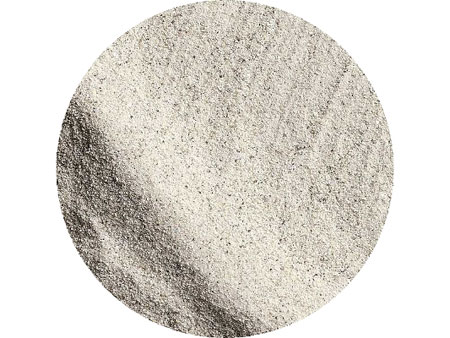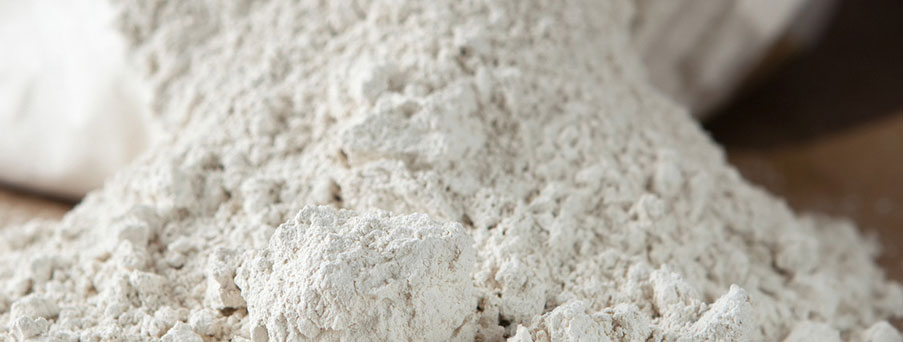There’s this new trend about a supplement called diatomaceous earth. The primary component is silica. Many die hard followers of this supplement claim that it’s a one size fit all solution.
It can do everything from treat cancer, treat diabetes, be used as a toothpaste, organic pesticide, can treat all sorts of skin remedies, reduce arthritis, prevent bones from getting, and so much more.

One of those claims was researched and investigated a little further. A Diatomaceous Earth (DE) study was published on The American Journal of Clinical Nutrition. The context of the study being that silicon is critical to the development of bones. However, it was unclear how silica works in foods that contain them. It wasn’t understood how to extract it, how it interacted with other substances, how it interacted with your body and so much more. That’s why this study was conducted. To understand a little bit more about the silicon in traditional foods.
It’s pretty simple to understand this study. There were two groups that were separated. One group consumed foods that were rich in silica. The other group did not. Then the effects of the food were compared to the group that did not get it. The subjects were also given liquids that contained silica in order to compare it to the group that ate the foods rich in silica.
Researchers wanted to see how the silica would interact in the human body. This was primarily measured via the gastro-intestines. The researchers predicted what the ideal amount of silicon that would enter the body. It then measured that prediction to actual results.
The conclusion of the study showed that silicon can be extracted from a variety of foods. The foods being beer, bananas, and string beans. These foods offered a high amount of silicon and the subjects were able to absorb them in high percentages. 60% of the silicon was retained while the remaining 40% was urinated away. The study concludes that foods is one way of obtaining silicon. It is suggested that more research be done on the role that silicon plays with regards to the development of bones. This can be used to treat a variety of bone diseases out there and help people who have fragile bones. It can treat people with injuries as well. The potential is there. It is quite possible that one can consume silicon to repair their bone damage or prevent bone decay.
Diatomaceous Earth & Silica History
Evidence has accumulated over the years about the role silicon plays in the development of bones. That part is clear. There’s a role. However, in the past researchers did not understand the properties of silicon that were contained in foods. Because of a lack of a clear picture it was originally thought you can only extract silica from liquids. Not enough research was done on extracting silicon from foods. It’s possible to absorb more silicon from foods instead of liquids. It would be more efficient to do so. The research conducted plays an extreme important to the development of bones.

In the past only research on animals were conducted. Silicon would be deprived from animals during the 70s. The results of all this research showed what can be considered the obvious. Bone growth would slow down and decay. The bones wouldn’t develop properly. Everything would be stunted. The studies concluded that animals would need/require silica in order to develop their bones. That’s why more research was done on humans.
Research was conducted on women who experienced menopause. Silica was given to them and they were observed properly. What ended up happening was that bone damage and decay would slow down drastically. The bones wouldn’t get weaker either. Bone decay is a serious issue for the elderly and is a major cause of death for the elderly.
As mentioned before there have been a lot of studies on silicon but not enough on the foods that contained it. The data that existed at the time only included liquids that contained silicon. This was a remarkable void that needed to be filled in order to complete our understanding of silica. It was once thought that the silica in plants is too low to be bothered with. The belief is held that any trace of silica is excreted away. However, this claim hasn’t been verified and is only a hypothesis.
The silicon that is absorbed in our bodies go through our kidneys to be excreted. The kidneys filters the silicon highly and a small portion is re-absorbed back into our bodies. The research before you wanted to see how silicon would react in the gastro-intestines and if the foods contained in silica can be used to assist in this matter.
How The Research Was Done ?
The subjects were selected from another study that was conducted in 1948. The purpose of that study was to understand and analyze heart disease. They wanted to understand the variables that would lead to heart disease.
The subjects were ideal for the purposes of this study. The children of the subjects are being currently tested as well. Approximately, 10,000+ subjects were evaluated to conduct this study. The research that has been currently conducted is much different from the small sample sizes conducted by other researchers. This data is much more conclusive. The procedure and protocol that were used in this research was approved by the Board of Human Research in the University of Boston.
Healthy subjects were chosen that contained average attributes. They would represent the mean of the population. Outliers were removed and not used. People of normal health were chosen to make sure the study was accurate as possible.
A rigorous quiz was given to the subjects in order to determine qualification for the study. The quiz asked the potential subjects about their dietary intake, family history of disease and other conditions, genetic conditions, mental condition, left or right handed and a variety of other relevant variables. This process allowed the researchers to find subjects that would be perfect for the study. The biases were removed. The results wouldn’t be skewed and only silica could be measured.
The foods were analyzed individually to determine the amount of silicon inside. Rigorous research was conducted to ensure that the same amount of silicon was used for each subject. This was done to prevent skewed results.
All of the analysis that was conducted were stored in a database. It was stored in the Dietary Assessment Research Program at Tufts University. The research also conformed to the standards of federal agencies in order to prevent skewed results and ease of access to the study.
Diatomaceous Earth Research
There were two studies that were done on the subjects. The first study measured whether there was silicon in foods and if that silicon could be absorbed for human consumption. And, secondly how the silicon reacted to the gastro-intestines were measured as well.
The subjects were forced to undergo fasting in order to prevent skewing of the results. The subjects were given liquids that contained high doses of silica. They were not allowed to eat/drink anything in order to prevent the skewing of the data.
Blood samples were extracted from the subjects and preserved in Mauser bottles in order to preserve the blood properly. They were stored in a proper airtight facility with the ideal room temperature and conditions. Everything was done in order to make sure the blood was stored in a clean and safe conditions. This would prevent the contamination of the blood samples and avoided skewing of data.
The food was bought from local shops. Cereal from the Kellogg brand was used to feed the subjects. Biscuits were obtained from the Weetabix brand. The rice from Uncle Bens. Raisins from Safeway. Other foods did not contain any notable brands.
The first study was done over the period of two days. Subjects were forced to fast and were required to remove everything from their stomachs. They were required to excrete in order to completely empty their stomachs. They were given a dose of the high dosage of silicon water. The subjects were then allowed to eat normal foods.
In the next day they fasted once more and it was insured that they contained nothing inside their stomachs. This was to of course prevent the skewing of data. This time they would eat various foods such as rice, beans, cereal, biscuits and so forth. After this was done their blood would be extracted. The blood were stored in sterile environments. Safely stored and adequately protected.
Urine was also taken. Every measure was taken in order to keep the urine samples clean and sterile. They were stored in clean bottles and in clean facilities. Every possible measure was done to make sure the urine was stored properly. This was done in order to avoid skewed results.
Enough blood and urine samples were taken for the purposes of this research.
Silica Analysis
The urine and blood samples were studied rigorously. They were properly processed and studied to see the silicon content of the samples. The meals were analyzed as well, in order to measure the absorption rate and how much was excreted/urinated away. Various techniques were used to measure the silicon content of all the foods that were used in the study.
The data was displayed through the use of Microsoft Excel. Urine and blood samples were put in a excel spreadsheet. This allowed us to efficiently compare the data that we had.
What The Study Found….?
It was found that men had a higher amount of silicon in their bodies. The absorption rate was greater in men as well. Therefore, men are more likely to absorb silicon from the consumption of food compared to men. The number of silicon present in the body would decrease as time would go on due to bone decay. Women would experience this decay much more faster than men.
The major food sources that yielded the most silicon for men were beer, bananas, white bread, cold cereal and coffee. The food sources that yielded the most for women were bananas, string beans, white bread, and cereal. These food sources contained the highest trace of silicon and are recommended to eat if one is interested in silicon supplementation.
Humans get a significant portion of their silicon from these foods. This diet is commonly more eaten among Asian/Indian subjects. Therefore, it is not surprising for them to have higher silicon within their bodies. This is because of their consumption of plants that are rich in silicon. An interesting observed occurrence is that bone injuries were less among Asian subjects. This is why it is highly suggested for researchers in the future to study the role silicon has on bone growth.
Beer contained the most silicon than any other substance out there.
The key takeaway from this study is that there are a variety of foods that contain a higher percentage of silicon then compared to their liquid counterparts. It was previously not understood how silicon inside foods worked. This study has resolved that issue. Men absorbs and have higher levels of silicon within their bodies compared to men. This is due to the consumption of alcohol. What you will not find in other studies is that we have accurately identified that the number of silicon in your body will drop as time goes on. This is extremely important piece of information as this is relevant to bone decay.
As of today we currently do not know if there was is a silicon deficiency condition or any condition that has an excess of silicon. We still don’t know enough about this substance. It is once again highly recommended for more research to be done on the role that silicon plays in the development of bones and potentially many other favorable outcomes like weight loss and the beautifiers we all crave for; better skin, hair, nails and teeth. Also what is even more impressive is due to the detoxification and cleansing nature that food grade DE has, it can also be an effective weight loss agent much like forskolin.
This research was done by the following people: Ravin Jugdaohsingh, Simon HC Anderson, Katherine L Tucker, Hazel Elliott, Douglas P Kiel, Richard PH Thompson, and Jonathan J Powell
These people have all the credit to this study.
In closing, we know this is only the tip of the iceberg data we have gathered on the overall diatomaceous earth and silica sensation of being a key player in the anti-aging health role. Please check back in with us as we will be updating this series on the silica health movement that is slowly gaining real traction.


